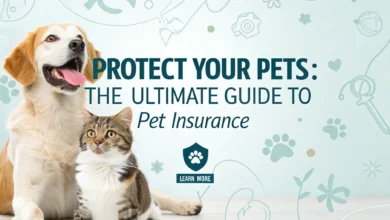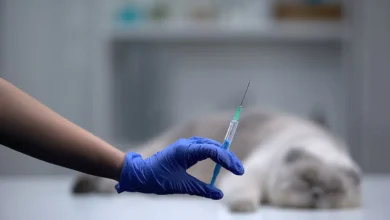Best Pet Insurance For Cats And Kittens Of 2024-petsinsurances.net
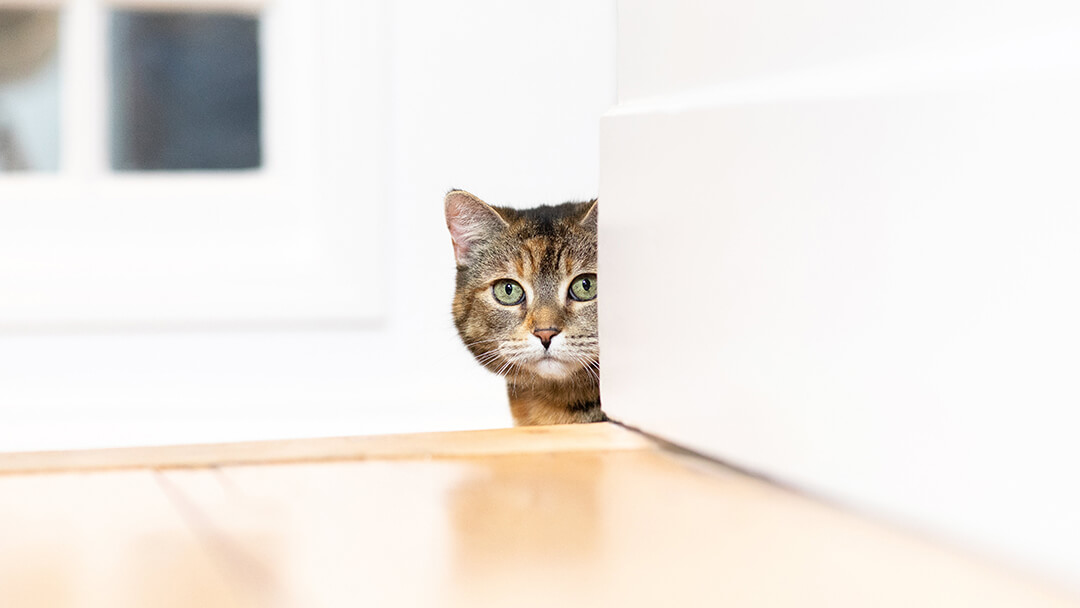
You adore your cat’s spirited playfulness and adventurous nature. However, their curious escapades can sometimes result in injuries, which can be costly to treat. Moreover, your feline companion may fall ill or inherit genetic conditions, leading to significant veterinary expenses.
Pet insurance offers a valuable solution to help manage these costs and other health-related expenses for both cats and kittens.
What is cat insurance
Cat insurance is a type of pet insurance policy that you can purchase for your cat or kitten, although similar policies are available for dogs as well. It functions much like health insurance, covering veterinary expenses and sometimes additional costs associated with your pet’s health care.
For instance, if your cat experiences an accident like falling from a tree and breaking a leg, cat insurance can help cover veterinary expenses such as X-rays, surgery, and medications.
How Does Pet Insurance for Cats Work?
Pet insurance policies are generally reimbursement-based, meaning you’ll pay up front for your cat’s vet bills and submit a claim to the insurance company.
Some pet insurance companies pay the vet directly, which helps keep your out-of-pocket payments low. There’s usually a deductible before coverage kicks in. For example, you might pay the first $250 in vet bills before your insurer starts to pay. Common deductible amounts are $250, $500 and $1,000.
Even after your deductible, your pet insurance plan may not cover 100% of the bills. You can usually choose a reimbursement level. For example, if you have a 90% reimbursement level, your pet insurer will pay 90% of the vet bill and you’ll pay 10%. Common reimbursement options are 70%, 80% and 90%.
What Does Cat and Kitten Insurance Cover?
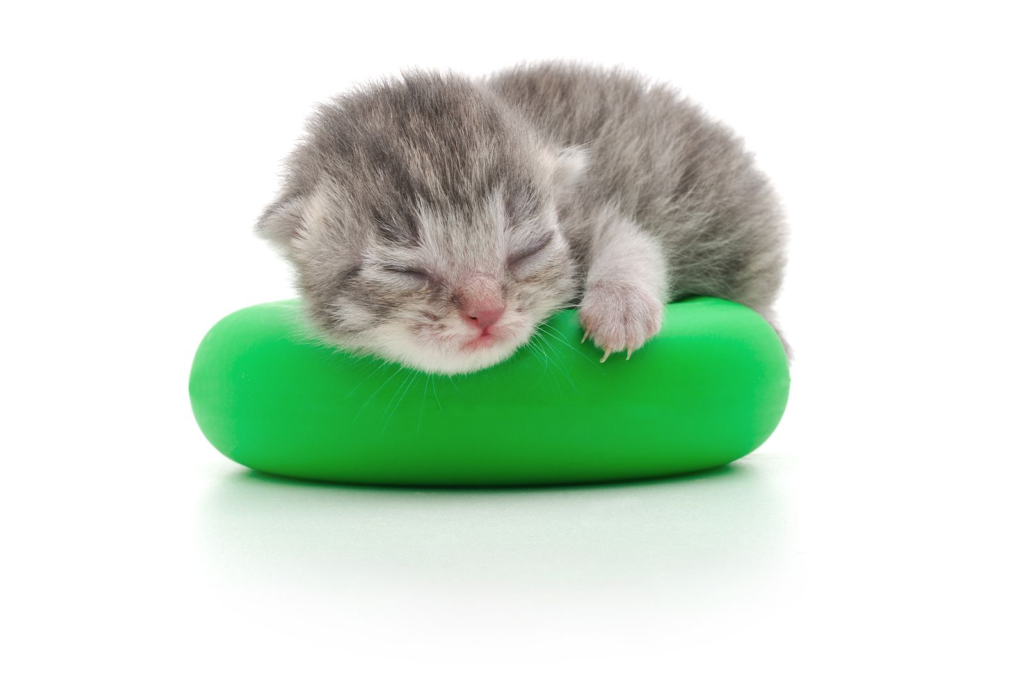
There are two main cat and kitten insurance plans available:
- Accident and illness coverage
- Accident-only coverage
Some pet insurers also offer optional preventative and wellness coverage for an additional cost. Understanding what pet insurance covers can help you decide what plan best fits your situation.
Accident and Illness Pet Insurance
This type of policy covers vet bills for accidents (like bite wounds or broken bones) and illnesses, including common illnesses (like a respiratory infection) and serious illnesses (like cancer). You won’t be covered by routine wellness exams such as routine veterinary visits, vaccinations, or flea, tick and heartworm prevention, but you can often add a wellness plan in order to get comprehensive coverage.
Accident-Only Plans
If your cat gets into a scuffle with the neighborhood stray, accident-only cat insurance can reimburse you for their vet bills. Accident-only plans are usually cheaper, but this coverage doesn’t pay for illness-related expenses. If your cat gets sick, you will have to pay for the cost of any treatment.
Wellness and Preventive Coverage
The best pet insurance wellness plans cover expenses that are not typically included in a standard pet insurance plan, such as routine vet exams, vaccinations, spaying and neutering, and flea, tick and heartworm prevention.
Not all insurers offer wellness plans. If you want these types of expenses covered, make sure you choose a pet insurer that offers the option to add a wellness plan.
What Does Cat and Kitten Insurance Not Cover?
Although cat and kitten insurance can cover a wide range of medical problems, there are some things pet insurance simply won’t cover. Here are some typical exclusions.
Pre-Existing Conditions
Pet insurance plans generally do not cover pre-existing conditions. So if your kitty has been previously diagnosed with a problem such as allergies, future treatment for its allergies may not be covered.
You may be able to find pet insurance for pre-existing conditions that are considered curable if your cat hasn’t had symptoms or treatment for a pre-existing condition for a certain amount of time. For example, if your cat has not had a recurrence of a condition such as an ear infection for 12 months, any recurrence of an ear infection after this time frame would be treated as a new problem and covered.
Experimental Treatment
Pet insurance plans usually only cover treatments and diagnostics within the standard of care accepted by your state’s board of veterinary medicine. Anything outside of that is usually considered experimental and will likely be excluded from coverage.
Some Non-Veterinary Expenses
Other expenses that don’t result from the care of your pet, such as taxes, record access or waste disposal, are not covered under cat and kitten insurance plans. However, some pet insurance plans cover non-medical costs such as advertising and reward for a lost cat.
Food or Nutritional supplements
If your cat requires a special diet or supplements, cat insurance usually won’t cover it. However, in some cases your pet insurance company may cover prescription food or supplements.
How Much Does Cat and Kitten Insurance Cost?

Cat and kitten insurance costs an average of $27 per month for $5,000 of annual coverage, a $250 deductible and 80% reimbursement level, according to Forbes Advisor’s analysis of pet insurance costs. The average cat and kitten insurance cost for a policy with unlimited annual coverage, a $250 deductible and 80% reimbursement level is $38 per month.
Here’s the information presented in a table format:
| Company | Average Monthly Cost for $5,000 Annual Coverage for Cats and Kittens | Average Monthly Cost for Unlimited Annual Coverage for Cats and Kittens |
|---|---|---|
| Embrace | $32 | $47 |
| Fetch | $30 | $43 |
| Figo | $20 | $32 |
| Healthy Paws | N/A | $23 |
| Lemonade | $23 | $27 |
| ManyPets | N/A | $40 |
| Paw Protect | $32 | $47 |
| Pets Best | $23 | $25 |
| Pumpkin | $33 | $50 |
| Spot | $24 | $46 |
| Average | $27 | $38 |
Factors That Affect the Cost of Cat and Kitten Insurance
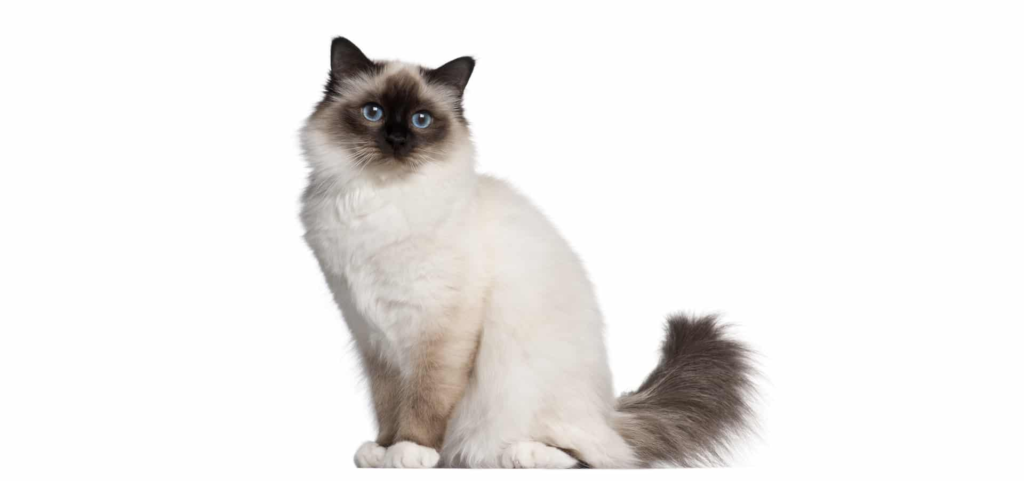
If you’re looking for cheap pet insurance, there are several factors that can affect what you’ll pay for cat and kitten insurance.
Your Cat’s Breed
Some feline breeds are predisposed to certain illnesses because of their size and genetics, so it can cost more to insure them. For example, Abyssinians may be more expensive to insure because they’re more prone to retinal atrophy and periodontal disease.
Your Cat’s Age and Gender
Aging cats are more susceptible to injury and illness, which means higher pet insurance costs. The cat’s gender can also affect your rates. Male pets are more likely to engage in risky behavior, such as roaming outdoors and fighting with other pets, according to Embrace pet insurance. Male pets are also more likely to develop health conditions like testicular cancer and prostate disease.
Your Location
Since vet costs fluctuate by location, so will the price you pay for coverage. You may not pay the same for pet insurance in Texas as you would for pet insurance in California.
Breadth of Coverage
The type of cat insurance plan you select will affect the insurance cost. For example, an accident-only plan will cost less than a more comprehensive accident and illness plan because it covers far fewer problems.
Your coverage choices will also have an impact on your cat and kitten insurance costs. For example, we found that an accident and illness plan with unlimited annual coverage is $11 more per month than a policy with $5,000 in annual coverage. You can also expect to pay more if you choose a low deductible and higher reimbursement level. That’s because your insurer will pay out more if you make a pet insurance claim.
How to Find the Best Pet Insurance for Cats and Kittens
The types of benefits and what’s covered by pet insurance can vary from insurer to insurer. Here are some policy details to look for when you’re shopping for the best pet insurance for cats and kittens:
Exam Fees
When you take your cat to the vet, you’ll be charged an exam fee. Not all pet insurance companies cover this fee. For example, Spot pet insurance includes exam fees in its coverage but Healthy Paws does not.
Some insurers offer exam fee coverage for an additional price. For example, Lemonade pet insurance offers a vet visit fee add-on to cover the exam fee for accidents and illnesses.
Waiting Periods
The waiting period is the amount of time before your coverage kicks in. For example, it’s common for pet insurance companies to have a 14-day waiting period for accidents and illnesses. Some insurers have longer waiting periods for orthopedic conditions, such as six to 12 months.
Pet insurance waiting periods vary depending on the company and you can find short waiting periods. For example, Figo has a 1-day waiting period for accidents and ASPCA pet insurance has no waiting period for orthopedic conditions.
Cat Insurance Discounts
The most common type of cat insurance discount is a multi-pet insurance discount for insuring more than one pet. These discounts typically range between 5% to 10% and can apply to cats and dogs. Not all insurers offer multi-pet discounts.
Other types of pet insurance discounts include annual pay discounts. You might also save if the cat insurance is part of your employer’s benefits or if you’re in the military.
Extra Perks
Don’t overlook extra perks when you’re shopping for cat insurance. Access to a 24/7 pet telehealth line could be crucial if your cat is seriously ill in the middle of the night. But not all insurers offer this benefit. If this feature is important to you, make sure you choose a company that offers it. You’ll also want to look for companies that offer the option to add a wellness plan if you want coverage for your cat’s routine wellness expenses.
Pet insurers may offer other types of perks that might be worth a look. For example, Nationwide pet insurance has a PetRxExpress program that gives preferred pricing on pet prescriptions and the option to have your prescriptions filled at the counter at Walmart and Sam’s Club pharmacies.
Compare Pet Insurance Quotes
Once you’ve identified a few pet insurance companies, the best way to find a good price is to compare pet insurance quotes. Make sure you’re comparing policies with similar coverage so you’re comparing in an apples-to-apples way. You can get free pet insurance quotes from a company’s website, by using a price comparison site or by contacting an independent insurance agent.
How To Make a Cat and Kitten Insurance Claim
Cat and kitten insurance is typically reimbursement based, meaning you’ll need to pay your vet bills up front and submit a claim for reimbursement. After your deductible is met, you’ll be reimbursed up to the reimbursement level you selected, up to your policy limits.
Here’s an example of how a cat and kitten insurance claim would work:
- Your cat is continually throwing up so you take them to the vet for an examination.
- Upon check out, you pay the entire vet bill and grab a copy of the itemized receipt.
- You then submit the receipt and medical record to your pet insurance company via an app, website or mail.
- The pet insurance company will review your claim. If the problem is covered by your policy, your insurer will send you reimbursement. Your deductible amount will be deducted from the claim check if it has not already been met.
Some pet insurance companies like Trupanion can reimburse the vet directly if the vet has Trupanion’s claim processing software.
What Are Common Medical Problems for Cats and Kittens?
Here are some of the most common medical problems for cats and kittens:
- Cancer: Cats can get various types of cancer that may be localized and confined to one area, or generalized and spread throughout the body. Cancer in cats can be detected by diagnostic tests such as biopsies, blood evaluation, radiographs and ultrasounds.
- Diabetes: When a cat’s body doesn’t utilize insulin normally or produce insulin, their blood sugar levels elevate and can result in hyperglycemia. Diabetes in cats can be treated with diet and/or insulin injections.
- Feline Leukemia virus: FeLV is one of the most common causes of disease and death in domestic cats. It weakens a cat’s immune system and can predispose them to other illnesses, such as anemia, cancer and kidney disease. There is no cure for FelV, but your veterinarian may recommend a vaccination.
- Rabies: Rabies is transmitted through a bite from an infected animal and close to 100% fatal for cats. Vaccination is key to preventing rabies and is required in some states. For example, Texas requires cats to be vaccinated against rabies by age 4 months.
- Ringworm: Also known as dermatophytosis, ringworm is a fungus that is highly contagious and can lead to patchy areas of hair loss with central red rings. Ringworm can be treated with ointments, medicated shampoo and oral medication.
- Upper respiratory infections: A cat’s nose, throat and sinuses can be susceptible to viral and bacterial infections. URI symptoms include congestion, cough, fever, runny nose, sneezing and loss of or decreased appetite. URI may be treated with medication, isolation, rest, nutritional support and support with fluids.
- Worms: Intestinal parasites are commonly called “worms,” including hookworms, roundworms and tapeworms. Symptoms of worms include constipation, diarrhea, bloody stool, weight loss and vomiting. Your veterinarian may treat worms with dewormer medication.
Kittens are most likely to contract diseases at age 6 months and under. Make sure you talk to your vet and discuss a kitten vaccination schedule to help prevent illnesses such as FeLV and rabies.
Methodology
To find the best pet insurance for cats and kittens, we used data provided by Petsinsurances.net to score each pet insurance company based on the following:
- Pet insurance rates (40% of score): We calculated average rates for mixed breed cats age 3 months, 2 years, 5 years and 7 years for plans with unlimited coverage, a $250 deductible and a 80% reimbursement level, or the closest options available.
- Special waiting period (10% of score): Many pet insurance companies have a special waiting period for problems such as orthopedic conditions. Plans that had no waiting period, a waiting period of fewer than six months or the ability to have the waiting period waived scored higher.
- Direct payment to vet (10% of score): Pet insurance companies that have the ability to pay a vet directly earned points.
- 24/7 vet health line (10% of score): Insurers that provide access to a 24/7 vet health line scored in this category.
- Routine wellness plans (10% of score): Insurers that offer optional wellness plans earned points.
- Pays veterinary exam fees (10% of score): Not all insurers cover exam fees, even if the fee is for an illness or accident-related visit. Plans that cover the vet exam fee scored in this category.
- Euthanasia or end of life expenses (5% of score): Insurers that cover end of life expenses, such as euthanasia, cremation or burial fees, scored in this category.
- Multipet discount (5% of score): Many pet insurance companies offer a discount if you insure more than one pet. Insurers that offer a multipet discount earned points.
Cat and Kitten Insurance Frequently Asked Questions
Let’s address those frequently asked questions about cat and kitten insurance:
- Is pet insurance for cats worth it?
- Yes, pet insurance can be worth it. It provides financial protection against unexpected veterinary expenses, ensuring your cat receives necessary care without straining your budget.
- Is it cheaper to insure a kitten?
- Generally, insuring a kitten is more affordable than insuring an older cat. Kittens have fewer pre-existing conditions and are less likely to develop health issues early on.
- Does cat insurance cover neutering and spaying?
- Some cat insurance plans do cover spaying and neutering. However, it’s essential to check the policy details to confirm whether these procedures are included.
- Can I get cat insurance for older cats?
- Yes, you can find cat insurance for older cats. However, premiums may be higher due to the increased risk of health issues in senior cats.
- Is dental care covered by cat insurance?
- Dental coverage varies by insurer. Some plans include dental care, while others may offer it as an optional add-on. Be sure to review the policy to understand what dental services are covered.
- What’s the waiting period for coverage to begin?
- Most pet insurance policies have waiting periods before coverage starts. These waiting periods vary for accidents, illnesses, and other conditions. Be sure to check the specific waiting periods in your chosen plan.
- Can I switch insurers if I’m not satisfied?
- Yes, you can switch insurers if you’re unhappy with your current provider. However, consider any waiting periods and pre-existing conditions when making the switch.
- Are hereditary conditions covered?
- Some policies cover hereditary conditions, while others may exclude them. It’s essential to review the policy details to understand how hereditary issues are handled.
- What’s the process for filing a claim?
- Each insurer has its claim process. Typically, you’ll need to submit vet bills and relevant documents. Familiarize yourself with the steps to ensure a smooth claims experience.
- Do premiums increase as my cat ages?
- Yes, premiums often increase as your cat gets older. Insurers consider age-related risks. Regularly review your policy and adjust coverage as needed.
